Auctions
A Cache of Photos From an Early MoMA Exhibition Offers New Clues About a Group of Lost Jacob Lawrence Paintings
Swann Auction Galleries is offering shots of the artist’s Coast Guard paintings, many of which are now missing.
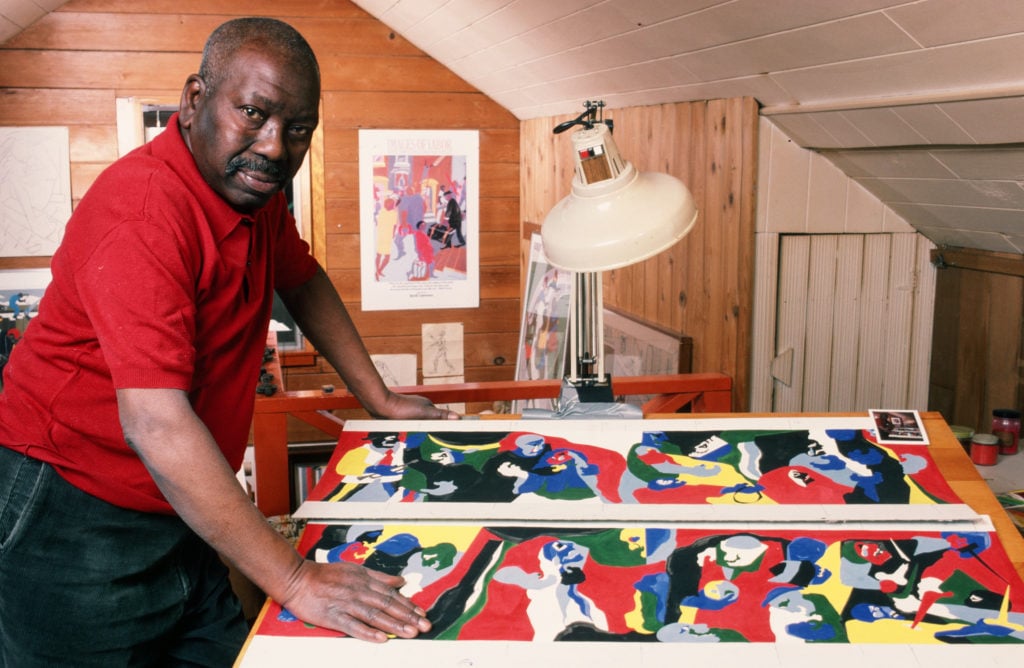
Swann Auction Galleries is offering shots of the artist’s Coast Guard paintings, many of which are now missing.

Brian Boucher

Among the mysteries of recent art history is the whereabouts of many works by the great African American painter Jacob Lawrence. An industry that did not properly value Black artists’ contributions let important pieces slip into obscurity.
Now, New York’s Swann Auction Galleries is offering a set of little-known photographs that document 14 of the 50 or so paintings Lawrence created while he was a war artist with the Coast Guard during World War II, almost all of which have gone missing. The images help shed light on a poorly documented chapter of Lawrence’s career—and may even lead unsuspecting people to realize they own a masterpiece.
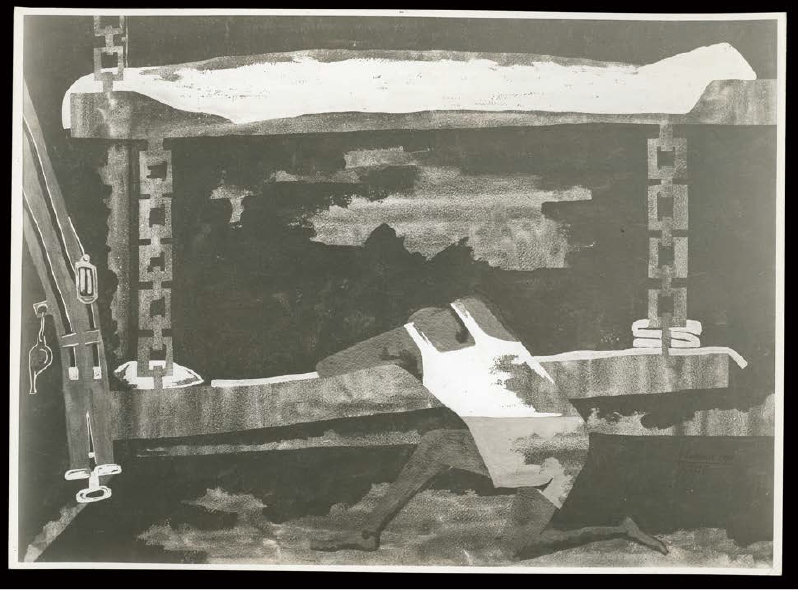
Jacob Lawrence, Prayer (1944). Courtesy of Swann Auction Galleries.
The publicity photos were shot by New York’s Museum of Modern Art for a small show of the artist’s work in 1944, the institution’s second-ever solo show by an African American artist. The set of photos, on offer by an unnamed dealer in Swann’s Printed & Manuscript African Americana sale on March 25, is estimated at just $2,000 to $3,000.
The paintings they document show Guardsman working, at leisure, and in prayer during an early moment of racial integration in the Coast Guard. They swab the decks, they work in the kitchen, they play cards and chess, they engage in boxing and wrestling matches.
Eight of the paintings Lawrence made during his stint with the Coast Guard were on view in the 1944 MoMA show, which also included the artist’s famed “Migration Series.” Eagle-eyed writer Greg Allen first wrote about Swann’s offering on his blog.
“What I find so striking is that they would get lost in the first place—that there would be such a publicity effort around them and then they get shown at MoMA and then they get trashed or lost,” said Austen Barron Bailly, who curated a recent traveling show of Lawrence’s work at the Peabody Essex Museum. “This is why there are people today who have never heard of Jacob Lawrence.”
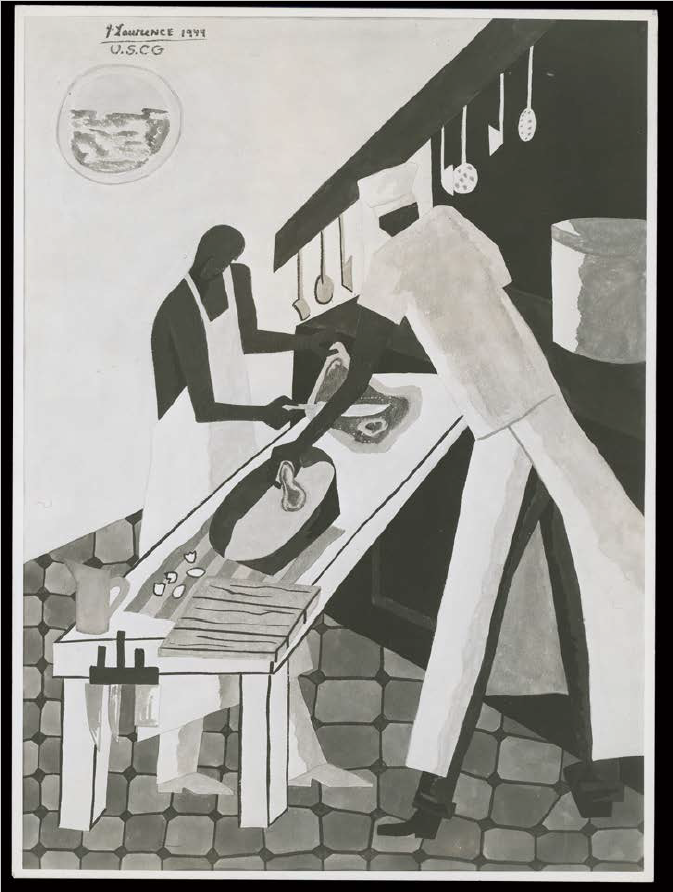
Jacob Lawrence, Officer’s Steward (1944). Courtesy of Swann Auction Galleries.
Although most of the paintings are at large, the significance of the series is known among scholars. In a 2015 article, art historian John Ott outlined the remarkable story of Lawrence’s time in the Coast Guard in the context of contemporary race relations.
After being drafted in 1943, the artist was elevated to a PR role by Captain Charlton Skinner, the commanding officer of the Sea Cloud, the first integrated warship in the US, which allowed him to paint full-time.
Opponents of integrating the military were still asserting Black people were biologically inferior, and when Black soldiers were allowed in, they were given service roles, or, later, menial and even dangerous jobs. At the same time, a 1943 labor union pamphlet by two Columbia professors was distributed to troops arguing for integration in opposition to Hitler’s embrace of biological theories of race. (It was illustrated by one Ad Reinhardt.)
“Jacob Lawrence was a young art star” by the time he created these paintings, Nigel Freeman, Swann’s director of African American fine art, told Artnet News. “He was not quite Basquiat, but he had already had the ‘Migration Series’ shown at the Downtown Gallery, from which works were acquired by the Phillips Collection and MoMA, all before he entered the Navy. He had risen to a prominence unheard of for a young African American artist.”
But, Freeman said, in terms of keeping track of the works, his renown “apparently didn’t help.”
The last few years have seen the rediscovery of three important Lawrence paintings. Swann auctioned one from the “Struggle…From the History of the American People” series for $413,000, more than four times its high estimate, in 2018. It was slotted into the recent exhibition organized by the Peabody Essex Museum.
When that show traveled to New York’s Metropolitan Museum of Art, the surrounding publicity drummed up not one, but two lost paintings by the artist in apartments just blocks apart on New York’s Upper West Side, likely to have been sold in a neighborhood Christmas auction in 1960.
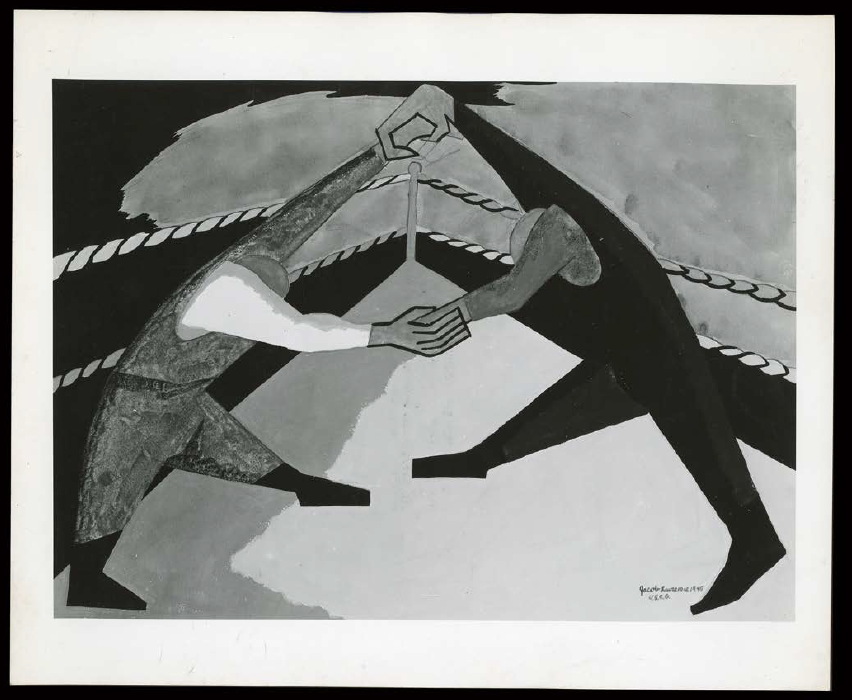
Jacob Lawrence, Wrestlers (1944). Courtesy of Swann Auction Galleries.
Some of the Coast Guard paintings made their way to public collections. For example, a portrait of Captain Skinner is now part of the Smithsonian American Art Museum’s collection; the watercolor Decommissioning the Sea Cloud is now at the Santa Barbara Museum of Art. And as a bonus for those sleuths who might wish to find more of them, Ott points out that pictures of all 50 or so known Coast Guard paintings also reside in the files of the National Archives.
While the exact trajectory of the entire trove and their history of ownership is unknown, many suspect the Coast Guard was not properly equipped to record and preserve them. “The Coast Guard are excellent at intercepting drug runners and so on, but they are not art curators,” Rick Statler, director of books and manuscripts at Swann.
But it’s not just curators who make art history, as revealed by the two people on New York’s Upper West Side who discovered those Lawrence paintings recently.
“The archival and documentary work has been done to some extent,” Bailly said, “but it’s so scattered. That’s where the public has the opportunity to play a role in rewriting art history. It’s not just the experts. We can’t do it alone.”
See more images of the little-known missing works below.
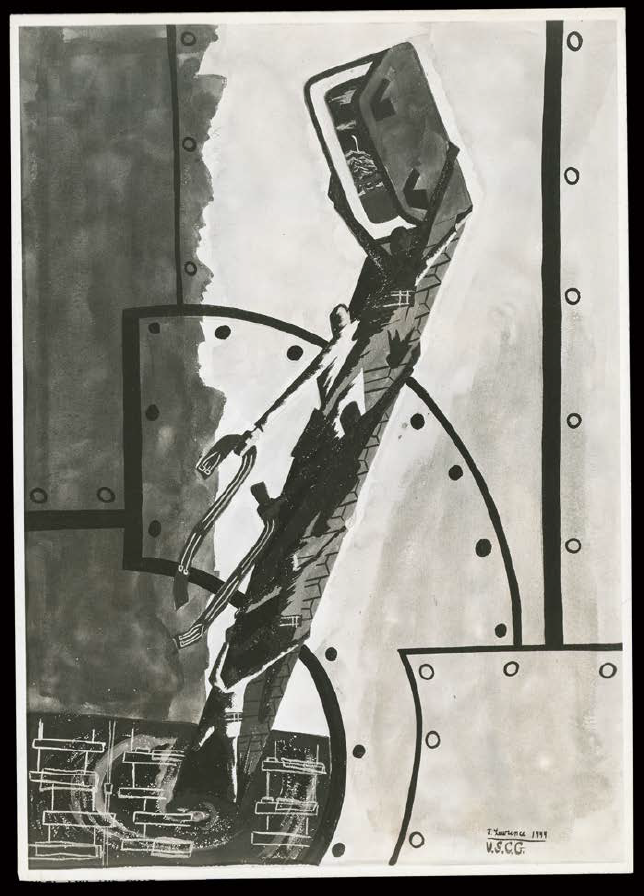
Jacob Lawrence, General Quarters (1944). Courtesy of Swann Auction Galleries.
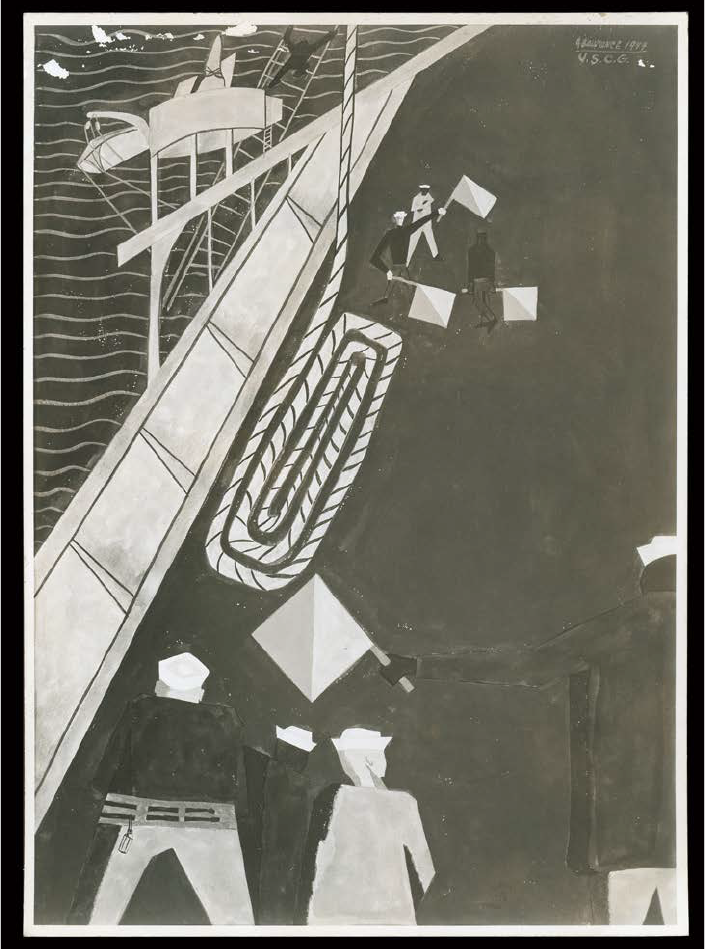
Jacob Lawrence, Signal Practice (1944). Courtesy of Swann Auction Galleries.
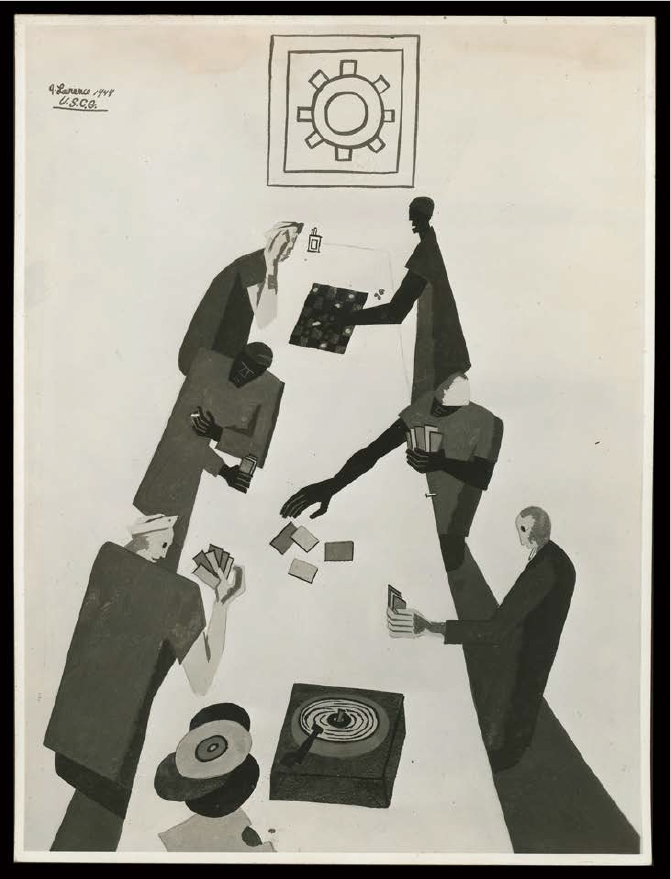
Jacob Lawrence, Recreation (1944). Courtesy of Swann Auction Galleries.
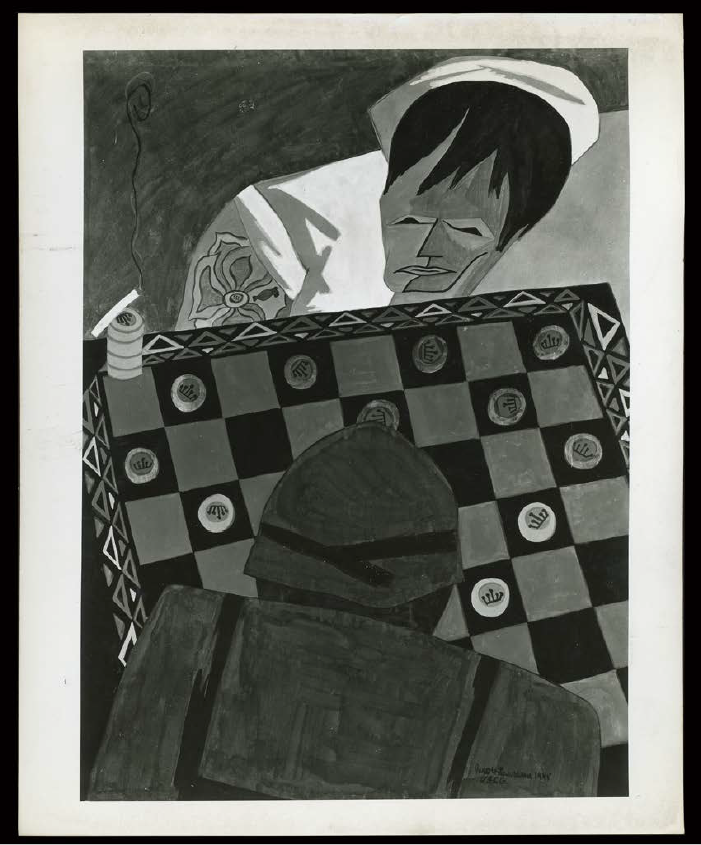
Jacob Lawrence, Checker Game (1944). Courtesy of Swann Auction Galleries.
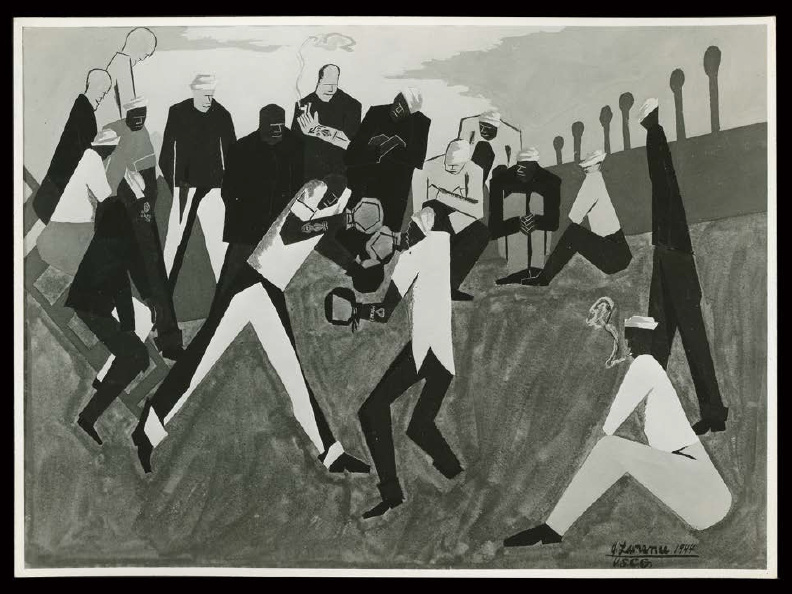
Jacob Lawrence, Recreation (1944). Courtesy of Swann Auction Galleries.
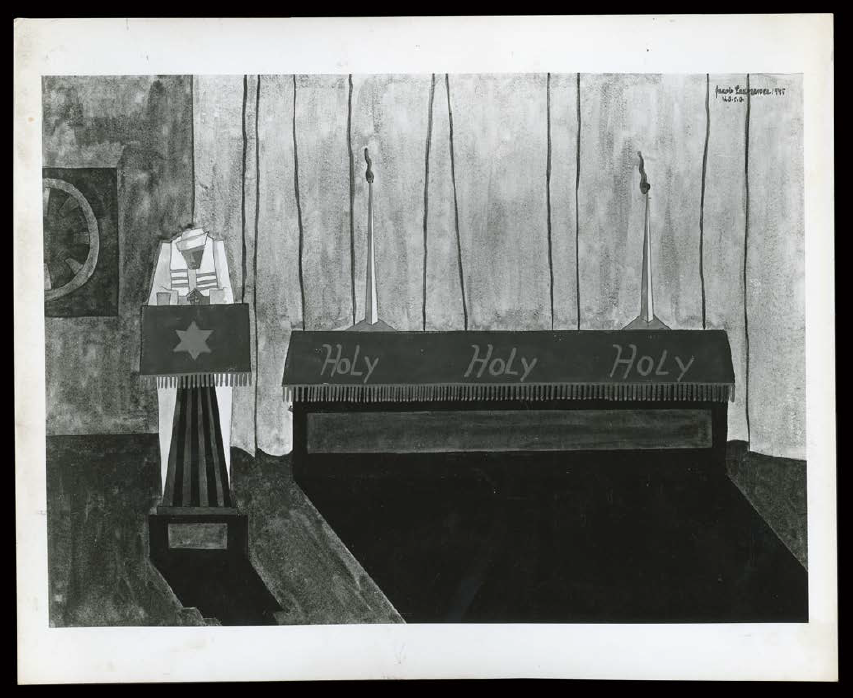
Jacob Lawrence, Worship (1944). Courtesy of Swann Auction Galleries.